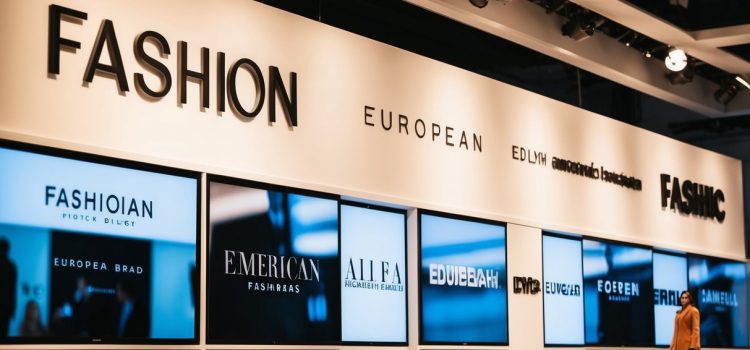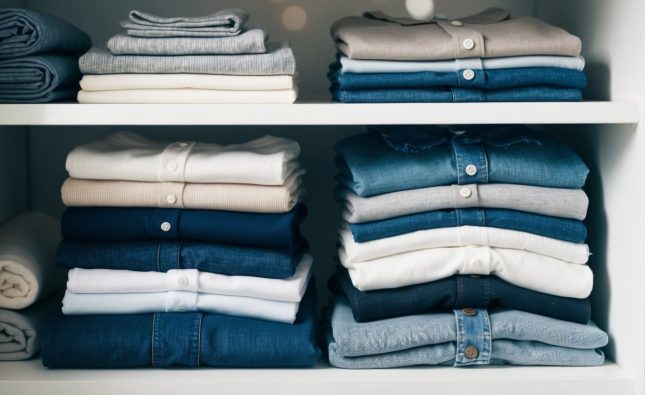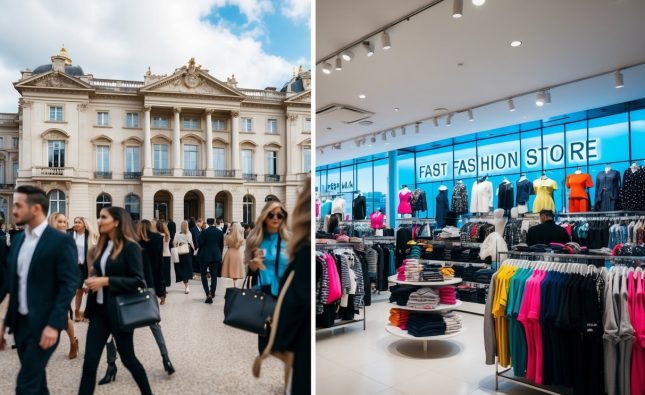
The fashion landscape is rich and diverse, with European and American brands each bringing unique characteristics to the industry. European fashion often emphasizes elegance, craftsmanship, and a certain avant-garde spirit, while American fashion tends to focus on casual wear and practicality. Understanding the key differences between these two fashion powerhouses can enhance one’s appreciation for style choices and the cultural influences behind them.

From high-end luxury labels like Chanel and Gucci to accessible streetwear from brands like Levi’s and Gap, the contrast in design philosophies is evident. European brands frequently prioritize timeless luxury and artisanship, while American brands often embrace innovation and mass accessibility. By exploring these distinctions, readers can gain insight into their own fashion preferences.
Ultimately, the choice between European and American fashion brands comes down to personal style and lifestyle. Exploring these differences allows individuals to make more informed decisions about their wardrobe, whether seeking sophistication or embracing a laid-back aesthetic.
Historical Development of Fashion in Europe and America
The evolution of fashion in Europe and America showcases a rich tapestry of cultural influences and societal changes. Each region has carved its unique path in the fashion world, shaped by historical events, technological advancements, and shifting consumer preferences.
European Fashion Evolution
European fashion history can be traced back to the late Middle Ages, where clothing indicated social status. The Renaissance period, particularly in Italy and France, emphasized artistry and craftsmanship, exemplified by intricate textiles and tailored garments.
By the 17th and 18th centuries, fashion became increasingly elaborate. The invention of the sewing machine in the 19th century also revolutionized production, making stylish clothing more accessible.
The 20th century brought about significant movements, such as Haute Couture in France and the rise of fashion capitals like Milan. Designers like Coco Chanel and Christian Dior defined contemporary styles, while cultural revolutions influenced trends, leading to a blend of traditional and modern aesthetics.
American Fashion Progression
American fashion originated from European influences, particularly in the colonial era. Early American clothing was practical and heavily influenced by British styles. As the nation grew, so did its fashion landscape, with cities like New York emerging as major fashion hubs.
The industrial revolution played a crucial role in shaping American fashion. Mass production allowed for ready-to-wear clothing, making fashion more accessible to the general public.
In the mid-20th century, American designers like Ralph Lauren and Calvin Klein gained prominence, showcasing a more casual, sporty aesthetic that reflected the lifestyle of the time. The rise of subcultures also impacted fashion, leading to diverse styles that appealed to different demographics.
Cultural Influences on Fashion
Cultural context plays a crucial role in shaping both European and American fashion. Each region showcases distinct styles that reflect its history, values, and social dynamics.
European Couture and Street Style
European fashion is often influenced by traditional craftsmanship and art movements. Cities like Paris, Milan, and London serve as fashion capitals where haute couture is synonymous with luxury and sophistication.
Designers prioritize quality and attention to detail, drawing inspiration from historical eras, regional aesthetics, and cultural narrative. For instance, brands like Chanel and Gucci embody the fusion of heritage and modernity in their offerings.
Street style in Europe, especially in urban centers, also showcases unique, often avant-garde looks. European youth embrace individuality, heavily influencing contemporary fashion trends through a mix of vintage and high-end pieces. This blend creates a dynamic relationship between high and street fashion, reflecting society’s diverse tastes.
American Casualness and Diversity
American fashion reflects a blend of cultures due to the country’s diverse demographic. The influence of streetwear, athletic wear, and casual styles is prominent. Brands like Levi’s and Nike emphasize practicality, comfort, and accessibility.
The casual approach allows for versatility in dressing, appealing to various lifestyles. American designers often prioritize functionality while still incorporating current trends and materials.
Additionally, America’s fashion scene is shaped by cultural movements, such as hip-hop and skate culture. These influences showcase originality and self-expression, leading to styles that range from tailored suits to relaxed denim ensembles. This variety highlights a rich tapestry of influences that defines American fashion today.
Leading Brands and Designers

European and American fashion brands each hold a distinct place in the global market, with unique influences and legacies. This section explores some of the most significant names in both regions.
Iconic European Fashion Houses
European fashion is characterized by its rich history and an emphasis on craftsmanship. Renowned brands include:
- Chanel: Founded by Coco Chanel, it revolutionized women’s fashion with the introduction of the little black dress and Chanel No. 5 perfume.
- Dior: Known for the “New Look” in the 1940s, it emphasized femininity and luxury in post-war fashion.
- Gucci: It has become a symbol of high-end luxury and is known for its innovative designs that blend heritage with modern aesthetics.
- Prada: Celebrated for its minimalist style, it has a profound influence on contemporary fashion, prioritizing fabrics and craftsmanship.
These brands not only define fashion trends but also play a vital role in setting standards for quality and style.
Influential American Fashion Labels
American fashion reflects a diverse cultural landscape and often prioritizes practicality and inclusiveness. Key labels include:
- Calvin Klein: Pioneered minimalist designs and is known for its iconic denim and underwear lines.
- Ralph Lauren: Focuses on classic, preppy styles that resonate with both luxury and accessibility.
- Tommy Hilfiger: Merges American casualness with a sporty aesthetic, appealing widely to the youth market.
- Michael Kors: Gained recognition for its accessible luxury products ranging from handbags to ready-to-wear apparel.
These labels highlight America’s evolving fashion scene, which emphasizes functional design without compromising on style.
Current Trends and Market Dynamics
The landscape of fashion brands is continuously evolving, influenced by sustainability initiatives and digitization. These factors play a crucial role in shaping consumer preferences and brand strategies.
Adoption of Sustainable Practices
Sustainable practices have become a critical focus for both European and American fashion brands. Many companies now prioritize environmentally friendly materials, ethical labor practices, and transparent supply chains.
Key strategies include the use of organic cotton, recycled polyester, and sustainable leather alternatives. Brands such as Stella McCartney lead the charge in ethical fashion, while American brands like Patagonia emphasize environmental responsibility.
Moreover, many companies are implementing circular economy models, encouraging recycling and reducing waste. This trend is not just about compliance but appeals to the growing consumer demand for sustainability, positioning brands as leaders in responsible fashion.
Impact of Digitization on Retail
Digitization has fundamentally transformed the retail landscape for fashion brands. Online shopping has surged, compelling companies to create robust e-commerce platforms.
Social media has also become a powerful marketing tool. Brands utilize platforms like Instagram and TikTok for marketing, reaching broader audiences and engaging consumers through influencer partnerships.
Moreover, the use of data analytics enhances personalized shopping experiences. Brands can tailor recommendations, optimize inventory, and analyze consumer behavior effectively.
With the rise of augmented reality (AR) features in apps, customers can virtually try on clothes, bridging the gap between physical and online shopping. This shift enhances convenience and aligns with modern consumer habits.












